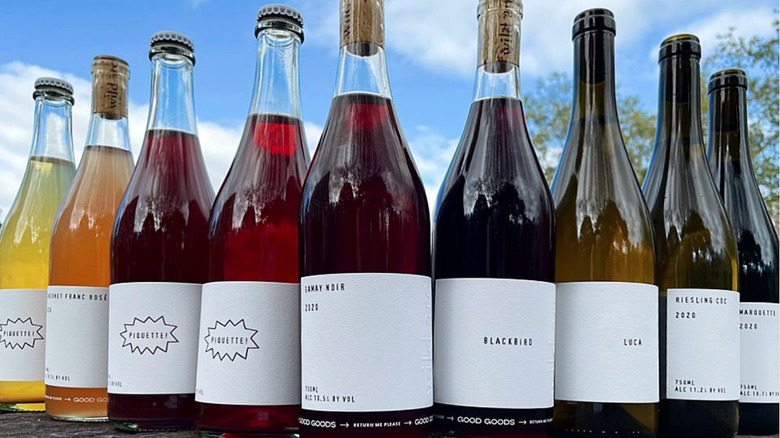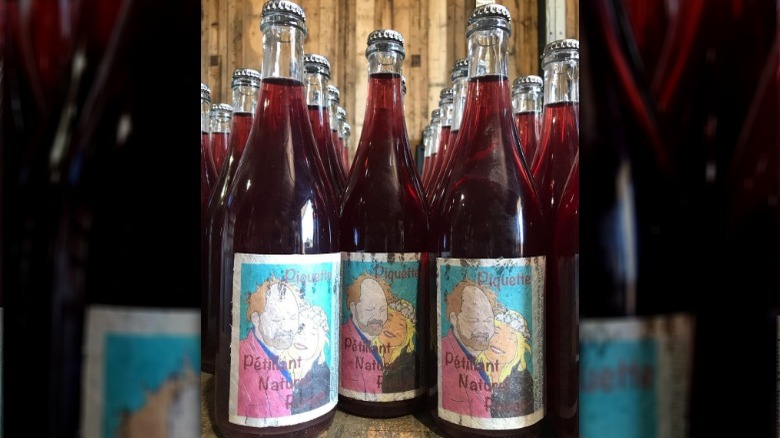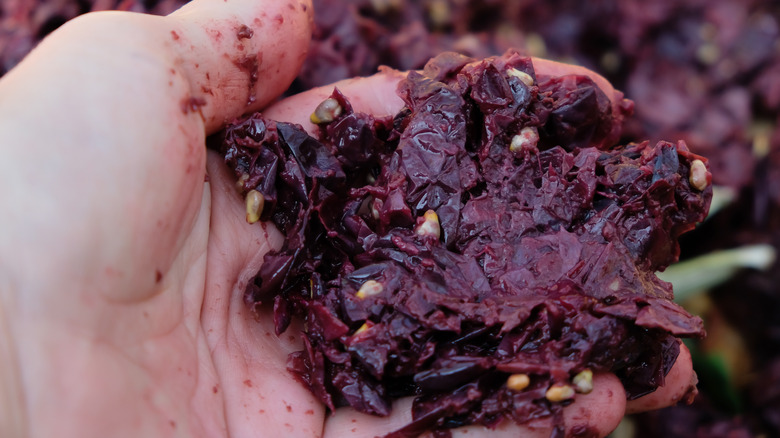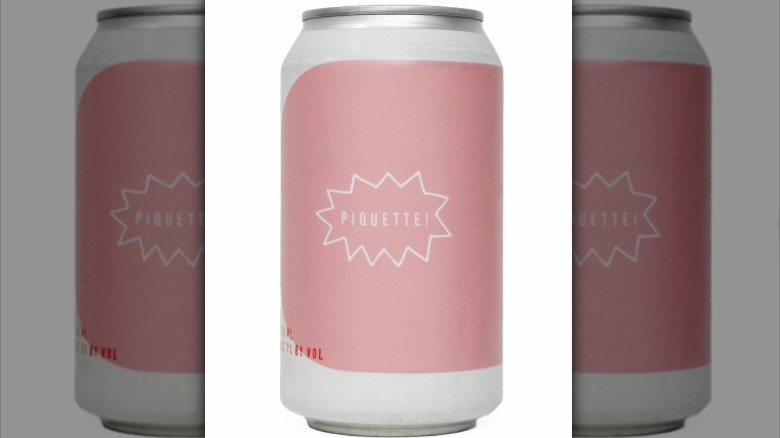Piquette: France's Low-Alcohol Sparkling Wine
Imagine it's a warm spring or summer day, and you're out for a picnic in the park, or a jaunt down the shore. You're thinking of picking up something to drink for the group, but can't quite make up your mind. Something bubbly and effervescent sounds ideal, but you don't want to spring for a bottle of champagne, and even prosecco or crémant seem a little extravagant for the occasion. You want something flavorful and low-ABV, but one of your friends can't do gluten, so beer's out.
So what's your solution? Probably something you've never heard of. Piquette, a French beverage with humble roots, is a low-ABV, gluten-free, sparkling drink similar to wine, but made in a more sustainable way that results in a more cost-effective buzz. Piquette has been having a moment among the pét-nat set, and it's time you gave it a shot at your next barbecue or beach hang.
The history of piquette
Piquette, which translates to "prickle," has been around for centuries, dating back even to ancient Greece and Rome. Though originally called lora, it took on its French name in reference to the bubbly texture of piquette that prickles the tongue. In Italy, it goes by a few names, including acqua pazza, acquarello and vinello.
For centuries, it was something brewed in vineyards but not sold commercially, reserved for farm workers and their families as a cheap reward once more profitable wine had been produced and sold. It was a way to make the most of the ingredients used in winemaking, by rehydrating, pressing, and fermenting discarded parts of the grape plant. Over time, "piquette" became slang for cheap, poor quality wine.
In recent years, however, there has been a growing interest in piquette that has brought it into a small number of commercial vineyards, usually those producing pét-nats and wines with a natural or sustainable bent. It can now be found far from France, in vineyards anywhere from New York to Australia.
What does piquette taste like?
As Erin Rasmussen from American Wine Project told Tasting Table, "Piquette tastes like a very light wine. Sometimes you'll find higher levels of volatile acidity or aromas and flavors that are associated with mixed-culture fermentations like certain types of beer, or kombucha. It's often spritzy or fizzy but it doesn't have to be. It can be red, rosé, white, orange," she explains. "The cool part about piquette is that there aren't any rules, and because the winery is reusing spent grapes, it is easier to get really creative with it."
"I like to say that [piquette] takes one of the common tastes from a grape and just blows it out," explained Wild Arc piquette maker Todd Cavallo in conversation with Wine Enthusiast. "For example, [Wild Arcs'] 2017 Riesling piquette was like drinking a tropical pineapple soda. The 2017 Traminette was all elderflower, and the 2017 Cab Franc had a very green nose."
How is piquette made?
Though similar to wine, piquette is not actually wine, because it is not made from first-press grapes. Instead, it is made from the grape stems, seeds, and skins (known as pomace) that are left over after traditional wines have been produced. It is often made from a mixture of grape varietals, allowing for a broad range in terms of flavors.
"Once the grapes or wine is pressed the first time, I reserve the pomace and rehydrate with water," explains Rasmussen. "The pomace soaks for anywhere from 24 to 60 hours, and then it's pressed again to a tank. At the end of the harvest season, I prepare the piquette for bottling. Because I want to make a sparkling piquette, I make sure there is viable yeast available in the wine and just before bottling I add my desired amount of organic cane sugar (this is like the liqueur de tirage in Champagne production). My addition is based on calculations for potential alcohol (I want mine to hit 7%) and potential dissolved CO2 (carbonation/fizz). After a few months, the fermentation inside the bottle has finished! And soon after that, the wine is released for sale."
The end process results in a product with an ABV of between 4% and 9%, far below the average for a glass of wine, around 11.5% – 13.5%.
How to drink piquette
Piquette, especially when canned, makes for an easy drink to toss in the fridge or cooler and crack open to sip on its own. But it can also be drunk over ice, or in spritz form, spiked with fruit or herbal simple syrup. Rasmussen has even hinted that she plans to introduce a piquette slushie in the coming months.
Piquette should be stored at temperatures below 75°F, so it's best to store it in the fridge, as it's best served cold anyway. "Piquette doesn't expire, but it is subject to the aging process, just like any wine," explains Rasmussen. "It's a style that begs to be consumed shortly after it's made."
"I definitely think of piquette as my opportunity to make a beverage for beer drinkers," says Rasmussen. "Piquette is also gluten free, which makes it a great option for a lot of people."
And as for food? "I think of picnic or cookout pairings like barbecue, burgers, grilled eggplant and anything with a salty/spicy/vinegar sauce."
Where to drink piquette
While there are still not many commercial producers of piquette in the United States, a few wineries have started making the drink as interest in piquette has been piqued. The first, Wild Arc in Hudson, New York, describes itself as "an experiment in regenerative permaculture and viticulture." The farm began producing piquette in 2016 thanks to the efforts of winemaker Todd Cavallo, whose interest in sustainable food and beverage production and farm to table ethics led him to an interest in piquette.
Another producer of piquette is the American Wine Project in Mineral Point, Wisconsin, which sells bottles of red and orange piquette. Old Westminster Winery in Westminster, Maryland also produces both bottled and canned piquettes.
Though piquette might not always be easy to track down, it's worth it if you can get your hands on it, with prices in the $15 range per bottle making it highly competitive compared to more sophisticated pét-nats or proseccos.





